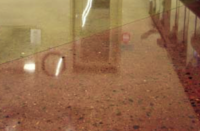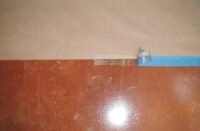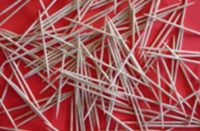With the boom in the decorative concrete business, we have seen a dramatic increase in the use of concrete sealers. There are many types of sealers, and it can be confusing to pick the right sealer for the right job. I’m going to try to simplify it a little and share with you some of the things that I have learned.
We are going to keep it simple and focus on outdoor applications only. First of all, let’s pick the right sealer aesthetically. If you want a glossy “wet look” appearance, your best bet would be a lacquer-based wet look sealer. If you want a more natural stone look, try a water-based acrylic sealer.
Lacquer-based wet look sealers are easy to apply and give you a gloss finish. They also tend to be easier to repair should a problem arise.
Water-based acrylic sealers enhance the color of the concrete and leave a more natural appearance. If a problem should occur, water-based sealers are more difficult to repair. This is why some people will tell you not to use water-based materials outdoors. However, many of our customers have had very good results using water-based sealer outdoors.
Now let’s focus on some potential problems that can arise with sealers.
Concrete is porous and it needs to breathe to let moisture escape. When applied at the manufacturer’s recommended rate, most concrete sealers will remain breathable. However, a blushing problem can occur when sealers are over-applied or reapplied too often. Blushing is a white film that forms when moisture is trapped between the concrete and the sealer. The thicker you apply sealer, the less it can breathe, the more likely it will trap moisture and “blush.”
With water-based sealers, blushing can be difficult to repair. If you’re lucky, a little time may be the fix, but if you’re not lucky you may have to remove the sealer with solventbased strippers or citrus-based cleaners and then reapply.
Lacquer-based sealers are generally easier to fix. Many times a little solvent on the surface will break down the sealer and clear up the blushing. It is also helpful to remember that sealers come with different solids content. Solids, depending on the type of sealer, either penetrate the surface to seal from inside the concrete or remain on top of the concrete to form a seal at the surface. Solvent holds the solids in suspension so the sealer can be applied by spray, brush or roller; then the solvent evaporates. Don’t be surprised if a low solids content sealer costs more than one with high solids content. In California we have strict VOC regulations; solvents are very expensive. Less solids, more solvent, more expense.
Is a sealer with a higher solids content better? Sometimes yes, but generally no. A higher solids content sealer is thicker and more difficult to apply, and there’s an increased chance of blushing.
Here are a couple of key things to keep in mind with sealers.
1. Moisture is your enemy.
2. More is not better.
Whatever sealer you choose, remember to apply at the application rate recommended by the manufacturer and make sure new concrete has had sufficient time to cure prior to the sealer application. You don’t want to trap moisture with the sealer. Whenever possible, put a sample down in an inconspicuous corner of the slab, to be sure get the look you want. — Jeff Patterson, vice president, Muller Construction Supply












